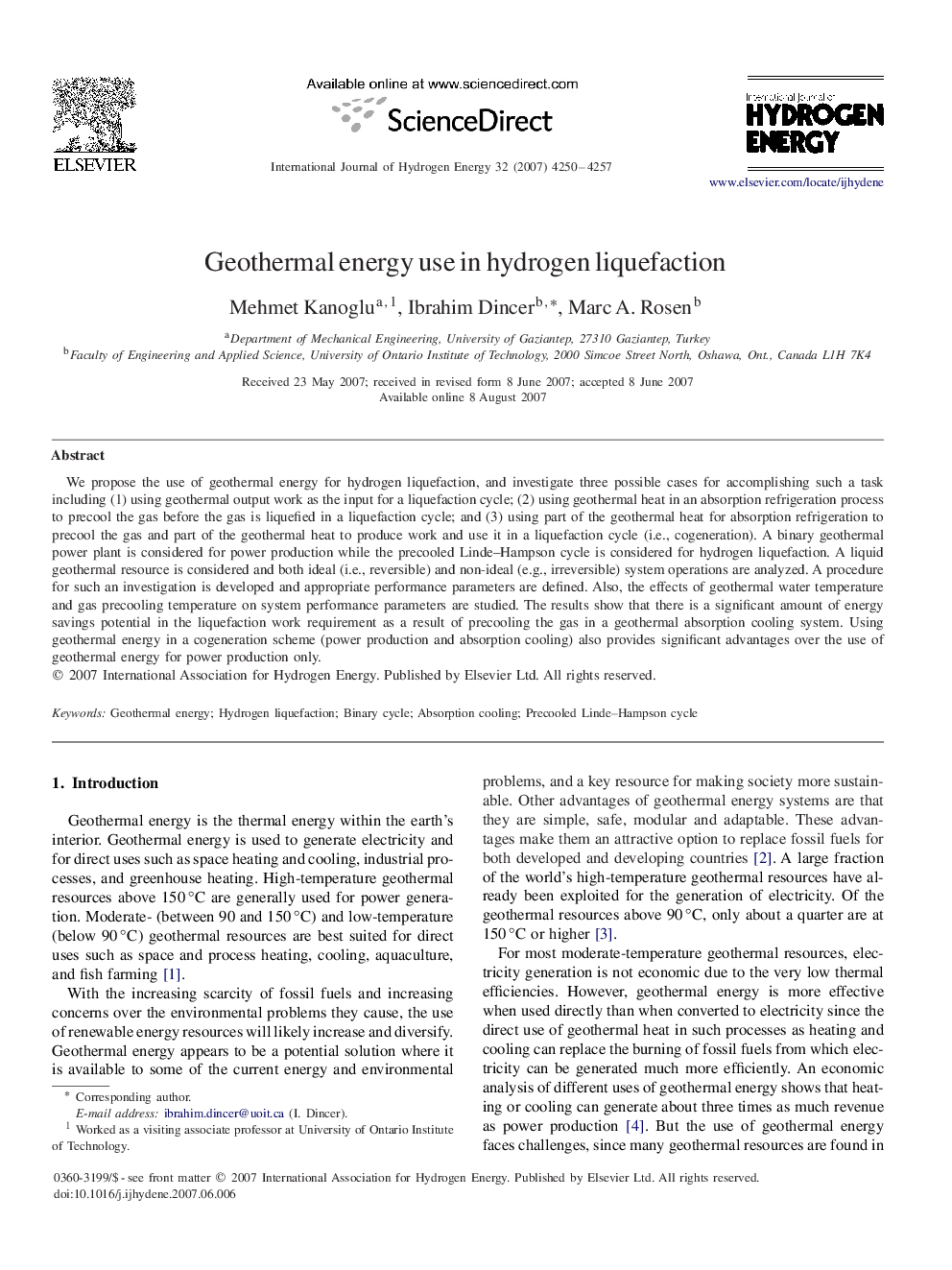| Article ID | Journal | Published Year | Pages | File Type |
|---|---|---|---|---|
| 1281804 | International Journal of Hydrogen Energy | 2007 | 8 Pages |
We propose the use of geothermal energy for hydrogen liquefaction, and investigate three possible cases for accomplishing such a task including (1) using geothermal output work as the input for a liquefaction cycle; (2) using geothermal heat in an absorption refrigeration process to precool the gas before the gas is liquefied in a liquefaction cycle; and (3) using part of the geothermal heat for absorption refrigeration to precool the gas and part of the geothermal heat to produce work and use it in a liquefaction cycle (i.e., cogeneration). A binary geothermal power plant is considered for power production while the precooled Linde–Hampson cycle is considered for hydrogen liquefaction. A liquid geothermal resource is considered and both ideal (i.e., reversible) and non-ideal (e.g., irreversible) system operations are analyzed. A procedure for such an investigation is developed and appropriate performance parameters are defined. Also, the effects of geothermal water temperature and gas precooling temperature on system performance parameters are studied. The results show that there is a significant amount of energy savings potential in the liquefaction work requirement as a result of precooling the gas in a geothermal absorption cooling system. Using geothermal energy in a cogeneration scheme (power production and absorption cooling) also provides significant advantages over the use of geothermal energy for power production only.
